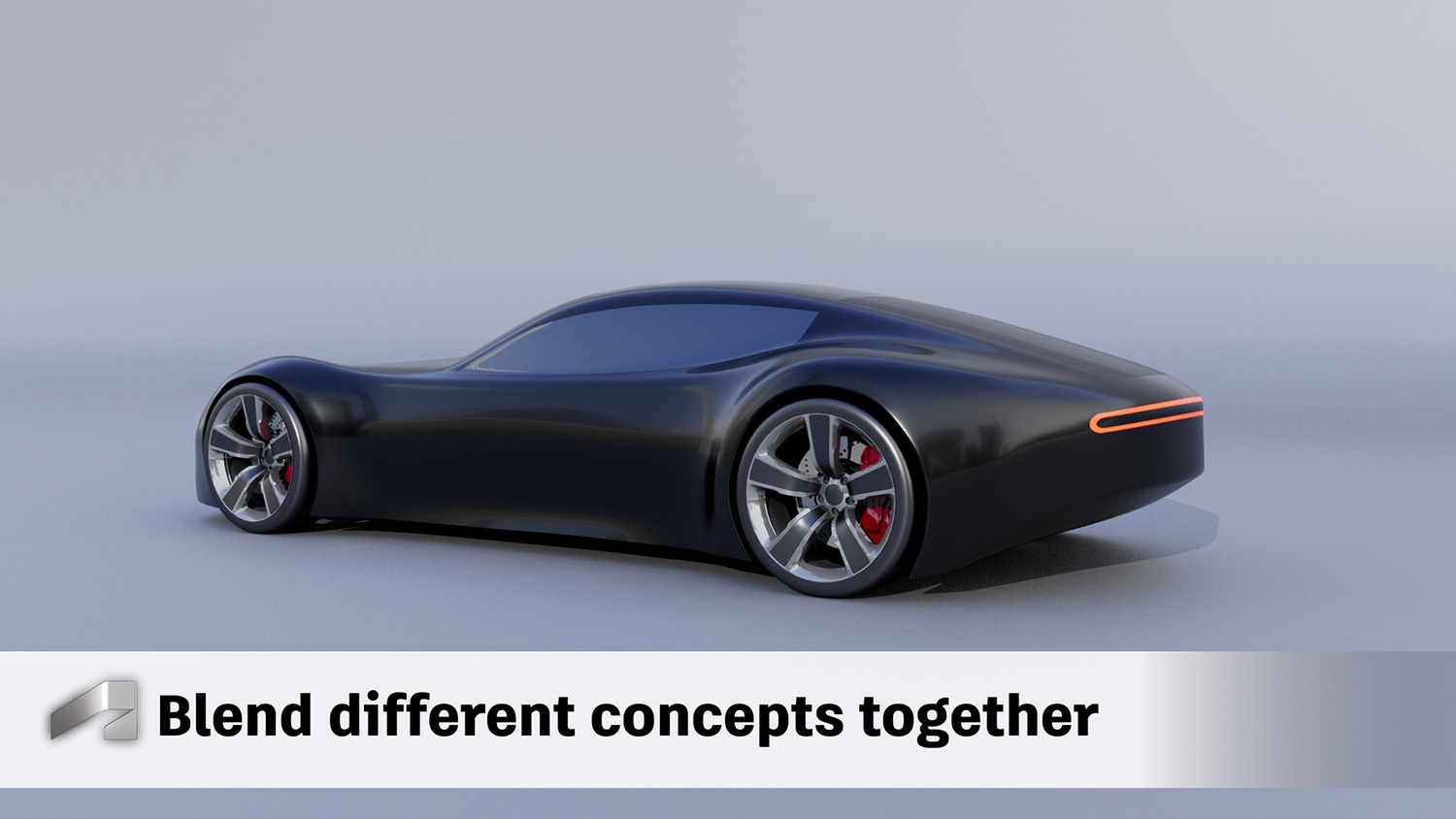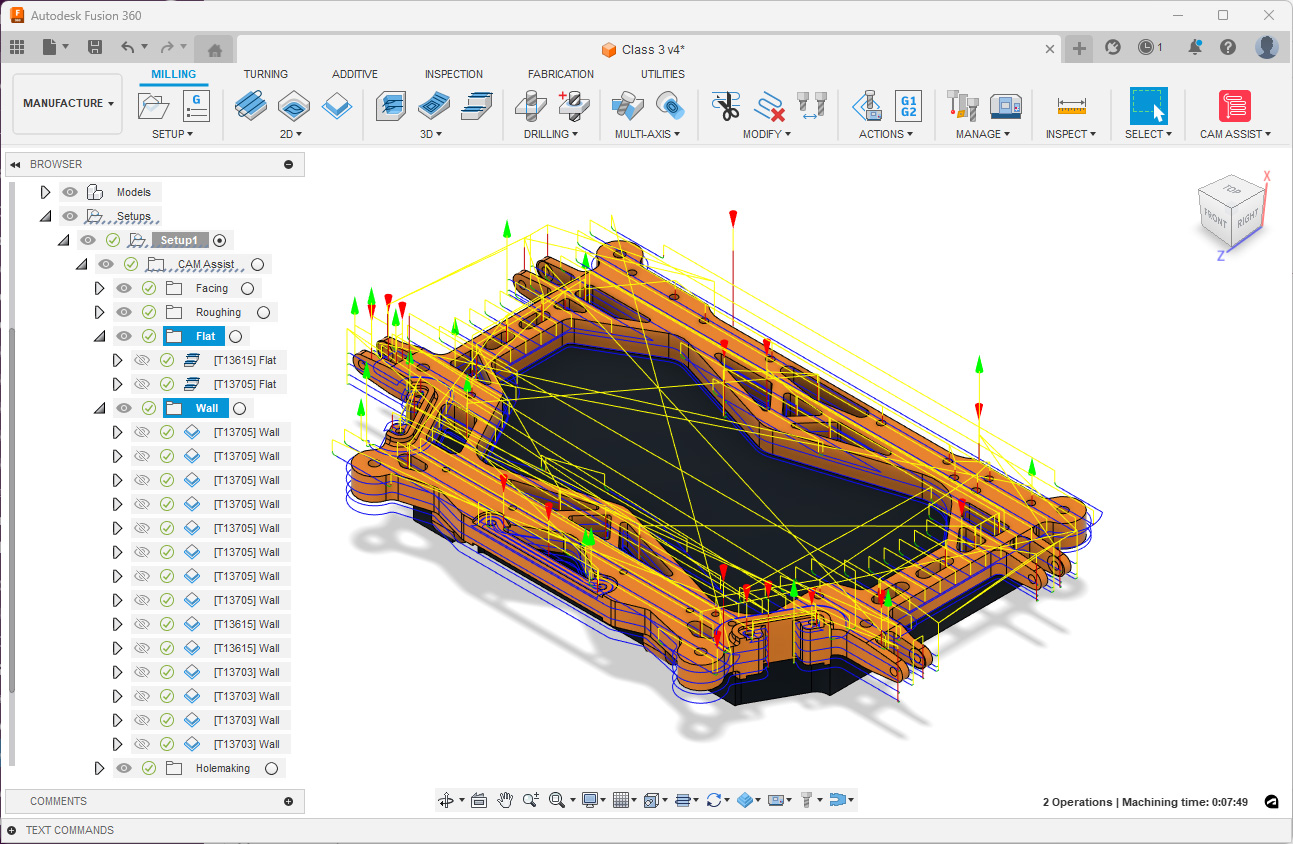
At AU, Autodesk reveals how users might use Autodesk AI, based on Blank.AI, to generate new concepts based on existing designs. Image courtesy of Autodesk.
Latest News
November 27, 2023
Once again, Autodesk clients, fans, and executives returned to Las Vegas, the city of bright lights and big bets, for the annual user conference, Autodesk University. A decade ago, AI (artificial intelligence) was a risky gamble, a pie in the sky. But in the post-ChatGPT era, AI seems like a winning bet. In fact, staying by the sideline now seems like a risky move, because the pie is now up for grab.
“For better or worse, AI has arrived, with all the looming implications for all of us,” noted Autodesk CEO Andrew Anagnost during his keynote. The rest of his talk and the subsequent announcements at the conferene made clear, for Autodesk, AI is “for the better.”
“We've been working to get you excited about AI for years. But now we're moving from talking about it to actually changing your businesses,” said Anagnost.
AI Winter is Over; Welcome to the AI Boom
On November 13, the first day of AU 2023, Autodesk launched Autodesk AI, available in Autodesk products and native to its Design and Make portfolio. It's based in part on the generative AI features from BlankAI, recently acquired by Autodesk. The company's announcement says the addition will lead to “3D models that can be rapidly created, explored, and edited in real time using semantic controls and natural language without advanced technical skills.”
Like many AI-powered applications, Autodesk will begin offering pretrained algorithms to speed up routine design and simulation works. But it also plans to allow customers to further refine the algorithm using their own proprietary data, though the mechanism for it remains unclear.
“At some point, as some of these capabilities get to a level of automation, we may actually license a model to a particular customer and they can train and improve that model on top of their capabilities. That's the business model that Microsoft is using right now for some of their tools. I think it's a very robust model,” said Anagnost during the Q&A with industry press.
This strategy is echoed by Autodesk CTO Raji Arasu, who said, “The most impactful is Autodesk data services. It is going to provide the tools that make your data actionable. And it's going to bring AI to life.”
Scott Wolslager, Engagement Manager for IMAGINiT, raised some red flags. “Today, we're still in the dot-com-boom of AI. Lots of startups coming out, especially around construction, safety, progress monitoring, and field work. These are all promising technologies. But we also need to consider the legality of using AI, and the problems that may come up and who's liable. And also, where's our data going? Who owns our data?,” he asked.
AI Fusion in Fusion 360
Specifically for Autodesk Fusion users, the company expects the technology “can automatically generate product designs that are optimized for manufacturing method, performance, cost, and more,” says the press announcement. It was up to Jeff Kinder, Autodesk Executive VP of Product Development and Manufacturing, to deliver more details in his keynote.
In concept design, Kinder said, “Debuting in our automotive design studio next year, BlankAI will allow you to pull from your historical library of design work, then use it to rapidly generate new concepts that build on your existing design style.” He also added, “By the end of the year, we will launch Automated Drawings in Fusion to translate 3D models into fully dimensioned drawings with the click of a button.”
Partner products for downstream applications will also see a boost in peformance from AI integration. “CloudNC add-in for AI-powered CNC toolpath automation. CloudNC sees customers reduce tool programming times by up to 80%,” said Kinder.
CloudNC's CEO Theo Saville said, “As a CNC programmer, you will be given a great starting point far more quickly. You're not going to need to create everything from scratch every single time; you're going to start at 80-90% of the way, and you're gonna make tweaks, make adjustments.”
But that doesn't mean the veteran machinists will become irrelevant. Saville said having the expert “coming up with basic 2D contour strategies for 30 pockets—that's a waste of expertise.” He envisons them “spending more time doing high value work.”

Partnerships and Acquisitions Bear Fruits
Autodesk reveals it's also developing bidirectional interoperability with PCB software maker Cadence, a partner. “Our integration as part of the Autodesk Platform ecosystem connects Cadence’s PCB design capabilities directly to Fusion, enabling data to flow in both directions,” according to Kinder.
In October, Autodesk announced it would acquire FlexSim, which provides factory operation and analysis software. At AU, Kinder said, “FlexSim powers a key link between factory design data and operational data. It helps with everything from planning and designing, to building and operating a digital factory. Autodesk brings together strengths in factory operations, building design, and construction solutions.”
Subscribe to our FREE magazine, FREE email newsletters or both!
Latest News
About the Author
Kenneth Wong is Digital Engineering’s resident blogger and senior editor. Email him at kennethwong@digitaleng.news or share your thoughts on this article at digitaleng.news/facebook.
Follow DE





